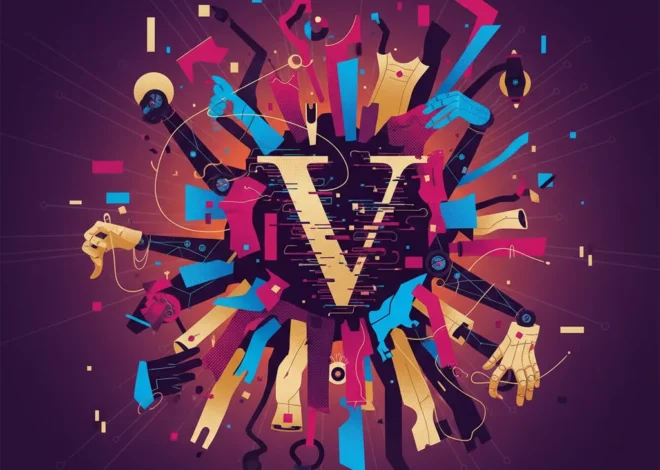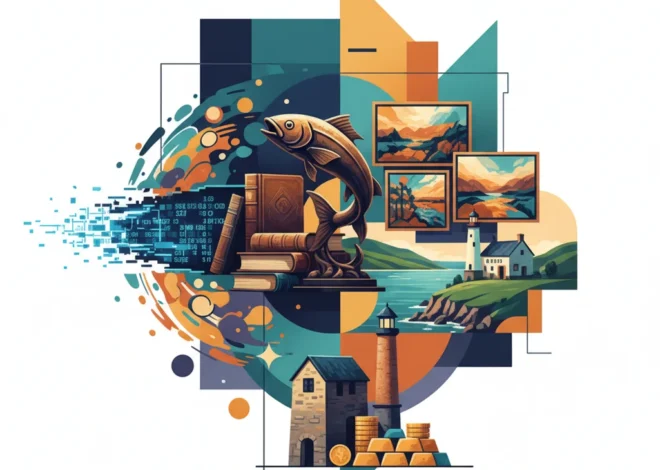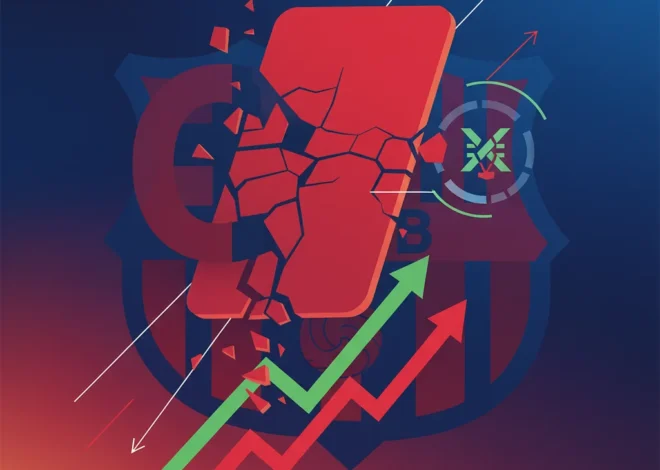
The Billion-Dollar Brushstroke: Is the Art-Fashion Alliance a Savvy Investment or a Market Bubble?
In the high-stakes world of luxury goods, where brand perception is currency and cultural relevance is the ultimate asset, a fascinating and increasingly complex relationship is playing out. The grand maisons of fashion and the hallowed halls of the art world are converging once again. From Louis Vuitton’s blockbuster collaboration with artist Yayoi Kusama to Dior’s sponsorship of major art fairs, the lines between runway and gallery have never been more blurred. But this is not merely an aesthetic dalliance. It’s a calculated strategic maneuver driven by the cold, hard realities of a shifting global economy.
With sales softening in key markets and audiences becoming ever more fragmented, luxury brands are leaning on the art world’s cultural cachet to reinvigorate demand and command attention. Simultaneously, art institutions are seeking new revenue streams and broader audiences. This symbiotic relationship raises a critical question for investors, business leaders, and anyone interested in the intersection of culture and commerce: Is this fusion a sustainable strategy for long-term value creation, or a short-term marketing ploy with diminishing returns? The answer has profound implications for brand valuation, consumer sentiment, and the future of two multi-billion dollar industries.
The Historical Precedent and the Modern Economic Imperative
The partnership between art and fashion is not a new phenomenon. One can trace its roots back to the 1930s when Elsa Schiaparelli collaborated with Surrealist icon Salvador Dalí to create the now-legendary Lobster Dress. That was a meeting of avant-garde minds, a genuine artistic dialogue. Today, the motivations are far more intertwined with corporate strategy and financial performance. The modern luxury market is a key indicator of global economic health, and its performance is closely watched on the stock market, with giants like LVMH and Kering serving as bellwethers for consumer confidence.
When this confidence wanes, as it has recently, these conglomerates must innovate to protect their margins and shareholder value. According to industry analysis, the luxury sector is facing a period of normalization after years of explosive growth, forcing brands to find new ways to justify their premium positioning (source). Art, with its connotations of timelessness, intellectual depth, and exclusivity, provides the perfect narrative foil. It elevates a handbag from a mere product to a piece of “collectible design,” a tangible asset. This is a powerful tool in an economic climate where conspicuous consumption is giving way to considered investing in pieces with lasting value.
Analyzing the ROI of a Cultural Phenomenon
For finance professionals and investors, the key challenge is measuring the return on investment (ROI) of these collaborations. Unlike a traditional marketing campaign with clear metrics like click-through rates or conversion funnels, the impact of an art partnership is far more nebulous. The returns are twofold: tangible (sales spikes, media impressions) and intangible (brand elevation, cultural credibility). Quantifying the latter is where the real difficulty lies, yet it is arguably the more valuable prize.
To better understand the strategic thinking, we can break down the common collaboration models and their intended outcomes.
| Collaboration Strategy | Primary Goal | Key Example | Potential Financial Metric | Intangible ‘Cultural Capital’ Gain |
|---|---|---|---|---|
| Artist-Designed Product Lines | Drive direct sales & create “hype” | Louis Vuitton x Yayoi Kusama | Sell-through rate of collection, revenue uplift | Positions brand as a patron of contemporary art, creates scarcity |
| Art Fair Sponsorship | Target High-Net-Worth Individuals (HNWIs) | Dior at Frieze London | Lead generation, client relationship building | Aligns brand with prestige and intellectualism |
| Brand-Owned Foundations | Long-term brand building & legacy | Fondation Louis Vuitton, Fondazione Prada | Brand valuation increase, tax benefits | Establishes the brand as a significant cultural institution |
| Artist-Curated Campaigns | Inject fresh perspective & reach new audiences | Various artists curating brand social media | Engagement rate, new follower acquisition | Demonstrates brand is “in the know” and culturally relevant |
Each of these strategies represents a different form of investing in brand equity. The Kusama collaboration, for instance, generated an estimated €4.2bn in Media Impact Value for Louis Vuitton, a staggering figure that demonstrates the immense marketing power of these alliances. Similarly, Frieze art fair’s new partnership with Deutsche Bank underscores the deep-seated connection between the worlds of high art and high finance (source), with luxury brands eager to be part of that exclusive ecosystem.
The Perils of “Art-Washing”: Dilution and Authenticity Risk
Despite the potential upside, this gold rush towards art collaboration is not without significant risks. The most prominent danger is the accusation of “art-washing”—the practice of using art to distract from or legitimize purely commercial, or even ethically questionable, business practices. When a collaboration feels inauthentic or forced, it can backfire spectacularly, alienating both the fashion-conscious consumer and the discerning art collector.
The risk of dilution is real for both parties. For the artist, over-commercialization can damage their credibility and devalue their primary work. For the brand, an ill-conceived partnership can make it seem desperate or derivative, eroding the very exclusivity it aims to protect. The challenge lies in finding a genuine synergy. As Frieze’s chief executive, Nathan Clements-Gillespie, noted, the most successful partnerships are those that “find a common language” and are not merely transactional (source). Investors should be wary of brands that engage in a rapid-fire series of shallow collaborations; it may be a sign of a brand struggling for identity rather than one confidently investing in its cultural narrative.
The Future Landscape: Navigating the Intersection of Commerce and Culture
Looking ahead, the relationship between art and fashion is set to become even more deeply integrated, driven by technological and economic forces. The rise of digital art and NFTs, while having cooled from their initial hype, has opened the door for new types of collaborations that live in the metaverse. This digital frontier presents a new avenue for brands to engage with a younger, tech-savvy demographic, blending digital ownership with physical products.
For business leaders and those involved in trading and investment, the key is to develop a sophisticated framework for evaluating these initiatives. This means looking beyond the immediate sales bump and assessing the long-term impact on brand perception and customer loyalty. Questions to ask include:
- Does the collaboration align with the brand’s core identity and history?
- Is the partnership a true dialogue or simply a licensing agreement?
- How does this initiative strengthen the brand’s position against competitors?
- What is the long-term plan for integrating cultural initiatives into the corporate strategy, beyond a single collection?
The role of major banking and financial institutions will also be crucial, not just as sponsors, but as facilitators of a more mature market for art and luxury goods as assets. As these items become more financialized, the need for robust valuation, insurance, and trading platforms will grow, creating new opportunities within the financial technology sector.
Conclusion: A Delicate Balance Sheet
The renewed alliance between art and fashion is a complex tapestry woven from threads of creative ambition, economic necessity, and strategic calculation. It is a high-wire act performed on the global stage, where a successful partnership can generate billions in value and a misstep can lead to a loss of credibility that is difficult to regain. For investors and market watchers, this trend is more than just a passing headline; it is a live case study in modern brand building and a vital indicator of the health of the luxury economy.
Ultimately, the brands that will triumph are those that approach these collaborations not as a marketing expense, but as a long-term investment in their own cultural legacy. They understand that true value lies not in merely borrowing from art’s prestige, but in contributing to it in a meaningful way. It’s a delicate balance between the commercial and the cultural, and for those who get it right, the masterpiece is a brand that is truly timeless.


